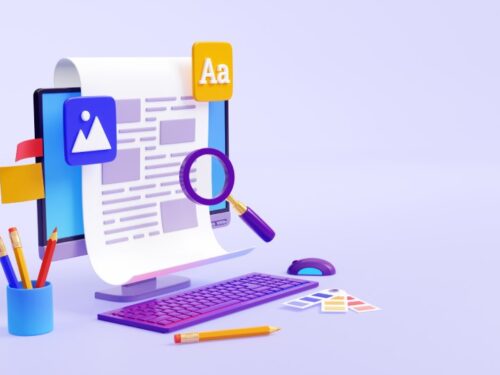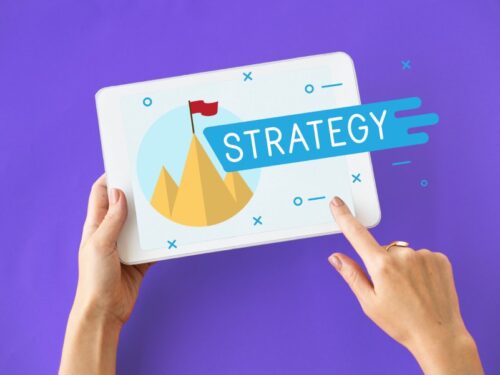Blogging is an essential tool for businesses and individuals alike to promote their brand, share their ideas, and engage with their audience. However, creating quality content alone is not enough to get your blog noticed in today’s crowded digital landscape. Search engine optimization (SEO) is a critical component of any successful blog strategy, as it helps your blog rank higher in search engine results pages, driving more traffic and engagement to your site. In this article, we will discuss three ways to transform your blog into an SEO machine, including keyword research, on-page optimization techniques, and tips for building quality backlinks.
Understanding SEO and Its Impact on Your Blog
What is SEO and Why is it Important?
SEO or Search Engine Optimization refers to the techniques and strategies used to improve a website or blog’s visibility and ranking in search engine results pages (SERPs). In other words, it’s all about making your content appear in front of the right audience when they search for relevant keywords or phrases.
SEO is crucial for bloggers as it helps increase their blog’s organic traffic, visibility, and credibility. When your blog appears on the first page of search results, it not only drives more traffic to your website but also establishes you as an authority in your niche.
How Search Engines Work and Ranking Factors to Consider
Search engines like Google and Bing use complex algorithms to determine which pages should appear at the top of the search results. While the exact ranking factors are not disclosed by these search engines, there are a few common ones that bloggers need to consider when optimizing their content.
These include factors such as the relevance and quality of your content, the structure of your website, internal and external links, user experience, and the use of relevant keywords in your content. Understanding how these factors can impact your blog’s ranking can help you optimize your content for better visibility.
Conducting Keyword Research to Optimize Your Content
Defining Your Blog’s Target Audience and Keyword Themes
Before you start creating content for your blog, you need to identify your target audience and the topics that they are interested in. This will help you come up with a list of relevant keywords and themes that you can use to optimize your content and improve your rankings.
For instance, if you’re running a cooking blog, your target audience might be people who are interested in healthy eating, quick recipes, or gourmet cooking. Based on these themes, you can conduct keyword research to find out what search terms your audience is using to find content related to these topics.
Tools and Techniques for Conducting Effective Keyword Research
Keyword research involves identifying and analyzing the keywords and phrases that people use to search for content related to your blog’s niche. There are several tools and techniques that you can use to conduct effective keyword research, such as Google AdWords Keyword Planner, SEMRush, and Ahrefs.
These tools help you identify popular keywords, analyze your competition, and find new keyword opportunities. By incorporating these keywords into your content, you can improve your blog’s visibility and attract more organic traffic.
On-Page Optimization Techniques to Boost Your Rankings
Optimizing Your Blog’s Structure and Navigation
One of the most crucial aspects of on-page optimization is the structure and navigation of your blog. A well-structured blog with clear and concise navigation helps search engines crawl and index your content more efficiently. This, in turn, can boost your rankings and improve user experience.
To optimize your blog’s structure, you can use categories and tags to organize your content and create a hierarchical structure. You can also use internal linking to help search engines discover new content and improve the relevance of your pages.
Creating Quality and Optimized Content for Your Blog Posts
Another critical aspect of on-page optimization is creating high-quality and optimized content for your blog posts. This involves using relevant keywords, optimizing your images, and creating compelling headlines and meta descriptions.
To optimize your content, you should ensure that your posts are well-researched, engaging, and provide value to your readers. You should also use header tags (H1, H2, H3) to structure your content, and make sure that your keywords appear naturally throughout your post.
Best Practices for Using Header Tags and Meta Descriptions
Header tags and meta descriptions are two essential elements that can impact your blog’s visibility and click-through rate. Header tags help search engines to understand the structure and content of your pages, while meta descriptions provide a brief summary of your page’s content in the search results.
When using header tags, you should follow a clear and consistent hierarchy (H1 for the main title, H2 for subheadings, etc.) to help search engines understand the context of your content. Similarly, you should create compelling meta descriptions that include your target keywords and provide a brief overview of your post’s value proposition.
Crafting Compelling Headlines and Meta Descriptions
The Importance of Catchy Headlines and Titles for Your Blog
One of the most critical elements of your blog posts is a compelling headline. A catchy headline not only grabs your reader’s attention but also helps improve your click-through rate and attract more organic traffic.
To create compelling headlines, you should focus on using descriptive and benefit-driven language that connects with your audience’s pain points and interests. You should also use numbers, questions, and emotional triggers to make your headlines more engaging and memorable.
How to Write Effective Meta Descriptions for Better Traffic and Engagement
Meta descriptions provide a brief overview of your page’s content and value proposition in the search results. They play a critical role in attracting clicks and improving your blog’s visibility and engagement.
To write effective meta descriptions, you should focus on using concise, compelling, and benefit-driven language that entices your audience to click through to your page. You should also use your target keywords strategically, and ensure that your meta description matches the content of your page.
Building Quality Backlinks to Your Blog
What are Backlinks and Why are They Important?
Backlinks are incoming links to your blog from other websites. They are important because search engines, like Google, use backlinks as a measurement of the popularity and authority of your blog. The more high-quality backlinks your blog has, the more likely it is to appear at the top of search engine results pages (SERPs), which means more traffic and increased visibility for your blog.
Effective Strategies for Building Quality Backlinks to Your Blog
One effective strategy for building quality backlinks to your blog is guest blogging. By guest posting on other websites, you can include links back to your own blog, which not only increases your backlinks but also helps you tap into new audiences. Another strategy is to create shareable content, such as infographics or videos, that other websites will want to link to. Finally, make sure to regularly promote your blog on social media to increase the chances of other bloggers and websites discovering and linking to your content.
Maximizing Social Media to Increase Traffic and Engagement
Using Social Media Platforms to Promote Your Blog and Increase Traffic
Social media is a powerful tool for promoting your blog and increasing traffic. Use platforms like Twitter, Facebook, and Instagram to share your blog posts and engage with your followers. Make sure to include visually appealing graphics and catchy headlines to grab people’s attention. You can also experiment with social media ads to reach even more people and drive traffic to your blog.
Best Practices for Engaging with Your Blog’s Social Media Followers
To effectively engage with your blog’s social media followers, make sure to respond to comments and messages in a timely manner. Engage with other people’s content by liking and commenting on their posts, which can help increase your own following. Consistency is also key – make sure to regularly post on social media and keep your followers updated on new blog content and any other exciting news.
Measuring Your Progress and Making Adjustments for Continued Success
How to Analyze Your Blog’s SEO Performance and Metrics
It’s important to regularly analyze your blog’s SEO performance and metrics to understand what’s working and what’s not. Use tools like Google Analytics to track your traffic, bounce rate, and other important metrics. Look at your backlink profile to understand the quality and source of your backlinks. Understanding your keyword rankings can also help you optimize your content for SEO.
How to Make Improvements and Adjustments to Your Blog’s SEO Strategy
Once you’ve analyzed your blog’s SEO performance and metrics, it’s important to make adjustments to your SEO strategy. You may need to update old blog posts with new keywords or try different strategies for building backlinks. Experiment with different content formats, like videos or podcasts, to see what resonates with your audience. Continuously monitoring and adjusting your SEO strategy will help ensure continued success for your blog.Incorporating these SEO strategies into your blog can help you drive more traffic to your site, increase engagement with your audience, and ultimately, achieve your blogging goals. Remember to always measure your results and adjust your strategy as needed to stay ahead of the competition. By investing time and effort into your blog’s SEO, you can transform it into a powerful machine that drives success for your brand or personal brand.
FAQ
What is SEO and why is it important for my blog?
Search engine optimization (SEO) is the process of optimizing your website or blog to rank higher in search engine results pages. SEO is essential for your blog because it helps you drive more traffic, increase your visibility, and improve engagement with your audience.
Do I need to be an SEO expert to optimize my blog?
Not necessarily. While having a good understanding of SEO best practices is helpful, there are many tools and resources available to help you optimize your blog effectively. By investing time and effort into your blog’s SEO, you can achieve significant results even without being an expert.
How long does it take to see results from my SEO efforts?
SEO is a long-term strategy that requires patience and consistency. While you may see some results in the short term, it can take anywhere from several weeks to several months to see significant improvements in your blog’s ranking and traffic. It’s important to stay persistent and trust the process.
What are the most important SEO factors to consider for my blog?
Some of the most important SEO factors to consider for your blog include keyword research, on-page optimization techniques (such as using header tags and meta descriptions), building quality backlinks, and engaging with your audience on social media. By optimizing these factors, you can significantly improve your blog’s ranking and traffic over time.





